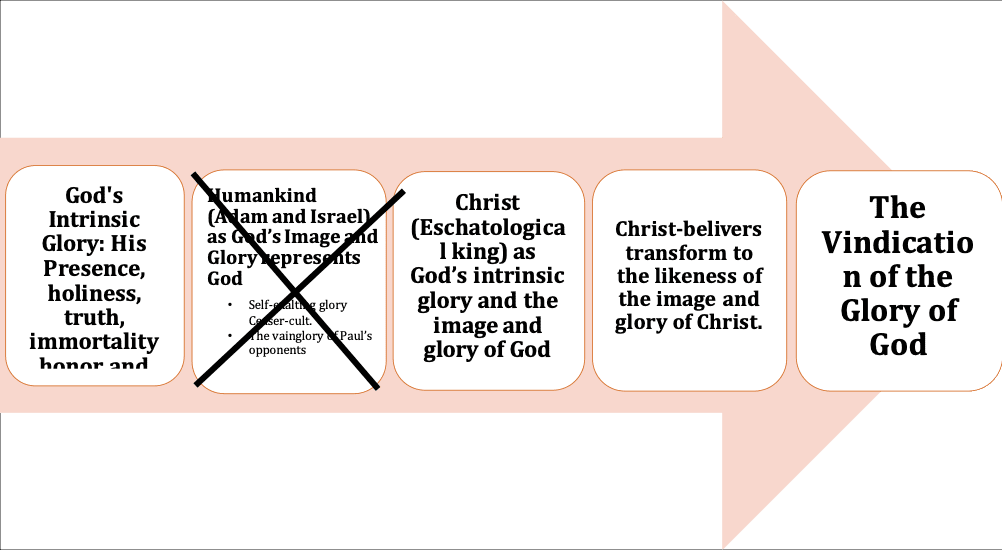When researching for my upcoming book Reading Romans with Eastern Eyes, I stumbled upon a fantastic dissertation by Mikko Sivonen titled “The Doxa Motif in Paul: A Narrative Approach to the Vindication of the Glory of God through Christ“. So, I’m excited to welcome him as a guest contributer. He serves with the IMB in Finland. His ThD in New Testament is from the University of Helsinki. He teaches and trains pastors and church planters in biblical studies at Agricola Theological Institute (www.ati.fi). He and his wife have 4 children.
To have an accurate understanding of the Bible, we must closely read the biblical text. One cannot overlook the relationship between words, sentences, and paragraphs within the book.
Equally important is to have correct categories of systematic theology that derive from Scripture. These approaches alone, however, are not sufficient for humans to know God in His fullness. Biblical theology functions as a “bridge” between exegesis and systematic theology. It provides an overall story and narrative, in which the Creator discloses His own character. Thus, understanding the story of redemption is pivotal for knowing the Lord and His purposes for humanity and the created cosmos.
In the past 20-30 years, biblical theology has gained renewed interest in both academic and church-related[1] literature and teaching.[2] Tracing specific motifs and themes throughout the Scripture, especially in light of God’s own self-revelation, has been an emerging and positive trend.
One of the main themes, if not the primary motif in biblical theology, is the glory of God. In the following, I briefly highlight the narrative structure of glory (Greek: doxa; Hebrew: kabod) as seen through Paul’s eyes.[3]
The Glory of God in the Hebrew Scriptures
According to Paul, Israel received glory (Rom 9:4). He refers primarily to three different characters in the plot found in the Hebrew Scriptures.
First, and most importantly, glory refers to the character of God. It indicates the Lord’s manifested honor, holiness, beauty, judgment, sovereignty, and superiority over other gods.
Second, glory also refers to Adam and Israel as representatives of God’s glory. Both Psalms 8, 24 talk about a king figure who receives glory from the Lord. While Psalm 8 seems to describe the creation story and Adam as the holder of derived glory, Psalm 24 talks about Davidic king as the doxa figure.
Third, the OT’s eschatological servant figure vindicates the glory of God. This vindication is needed due to the idolatry of Israel. This is particularly seen in the book of Isaiah (but also in other prophetic literature and Psalms).
Human beings: God’s Derivative Glory
For Paul, the language of glory is prevalent in all his letters, occurring altogether 96 times. For example, in Romans, Adam and Israel serve as characters created and purposed to represent God’s glory and his attributes in the created world. Paul wanted his audience, Jews and Gentiles alike, to identify with the fallen Adam and with Israel, i.e. those who do not display the doxa of God due to idolatry.
“they exchanged the glory of the immortal God for images resembling mortal man and birds and animals and creeping things.” (Rom 1:23)
While Romans 1 describes the worship of God in relation to glory in general terms, 1 Corinthians 11:1-14 focuses specifically on the setting where believers gather for worship.
“Man is the image and glory of God, but woman is the glory of man.” (1 Cor 11:7)
In the latter occurrence, Paul alludes again to the creation story. In 1 Corinthians, the order of creation, male first then female, highlights analogically the nature of the relationship between intrinsic and derivative glory. Even hair and dress code are to reflect the glory of God.
The Glory of Christ: God’s Intrinsic and Derived Glory
Paul then identifies Christ both as the intrinsic doxa of God, who represents God and the derivative doxa of God, namely the second Adam, the royal king, and the eschatological Servant. In 1 Corinthians 2:8, Christ is unequivocally identified as the intrinsic glory of God. Paradoxically the glory of God is now manifested on the cross.
“…they crucified the Lord of glory”. (1 Cor 2:8)
Christ’s intrinsic and derived nature as God’s glory is also seen elsewhere (1 Cor 15:42- 49; 2 Cor 1-4; Rom 5-8; Rom 9:1-23; Rom 15:6-13; Phil 2-3). These passages highlight “the gospel of the glory of Christ, who is the image of God.”
The Transformation of Believers into Christ-glory
The Christ-event (i.e., his death, crucifixion, and resurrection) vindicates the glory of God. Subsequently, it inaugurates the eschatological transformation of Adam (i.e., humanity), Israel, nations, and the entire creation. This change is not merely a return to humanity’s original image and glory, but a metamorphosis into Christ’s greater glory (1 Cor 15:42-49). While enemies of the cross remain in their shame (Phil 3:19), believers in Christ will be changed into glory,
“Jesus Christ will transform our lowly body to be the likeness of the body of glory.” (Phil 3:21)
Furthermore, this transformation is not from material to immaterial, rather from the body of sin to the likeness of the resurrected Christ’s glory. A spiritual body does not mean immaterial but animated by the Spirit.
“It is sown in dishonor; it is raised in glory. It is sown in weakness; it is raised in power. It is sown a natural body; it is raised a spiritual body.” (1 Cor 15:43-44)
Ultimately, the entire creation will be restored to its consummated, good, and perfect order of God. This takes place when the glory of God’s children will appear after the likeness of Christ (Rom 8:21-25).
Finally, Paul urges his audience to identify, not with the vainglory of his opponents or Caesar, but with the sufferings of the crucified and risen Christ, the doxa of God, in order to glorify God.
In his ethical exhortation, Paul encourages believers to identify with Christ, which results in their transformation into the eschatological humanity and humility of Christ-likeness. This transformation encompasses the sexual relationship between male and female as a display of the glory of Christ. In addition, the renewed believing community of Jews and Gentiles are to consider others before themselves. They are called to spread the message of the cross to an unbelieving world as the messengers of Christ’s glory (2 Cor 8:23).
The Ultimate Goal: The Vindication of the Glory of God through Christ
These practices glorify God and are present expressions of the vindication of the glory of God (Gal 1:3-5, Phil 4:19-20, Rom 11:34-3; 16:25-27) within the church, the believing humanity that awaits the final transformation to the likeness of the derivative glory of Christ.
[1] For example, see New Studies in Biblical Theology series by IVP edited by D.A. Carson.
[2] For example, see Michael Lawrence, Biblical Theology in the Life of the Church: A Guide to Ministry (Wheaton: Cross, 2010).
[3] This post is based on my dissertation: Mikko Sivonen, The Doxa Motif in Paul: A Narrative Approach to the Vindication of the Glory of God through Christ (ThD diss., University of Helsinki, 2018).












